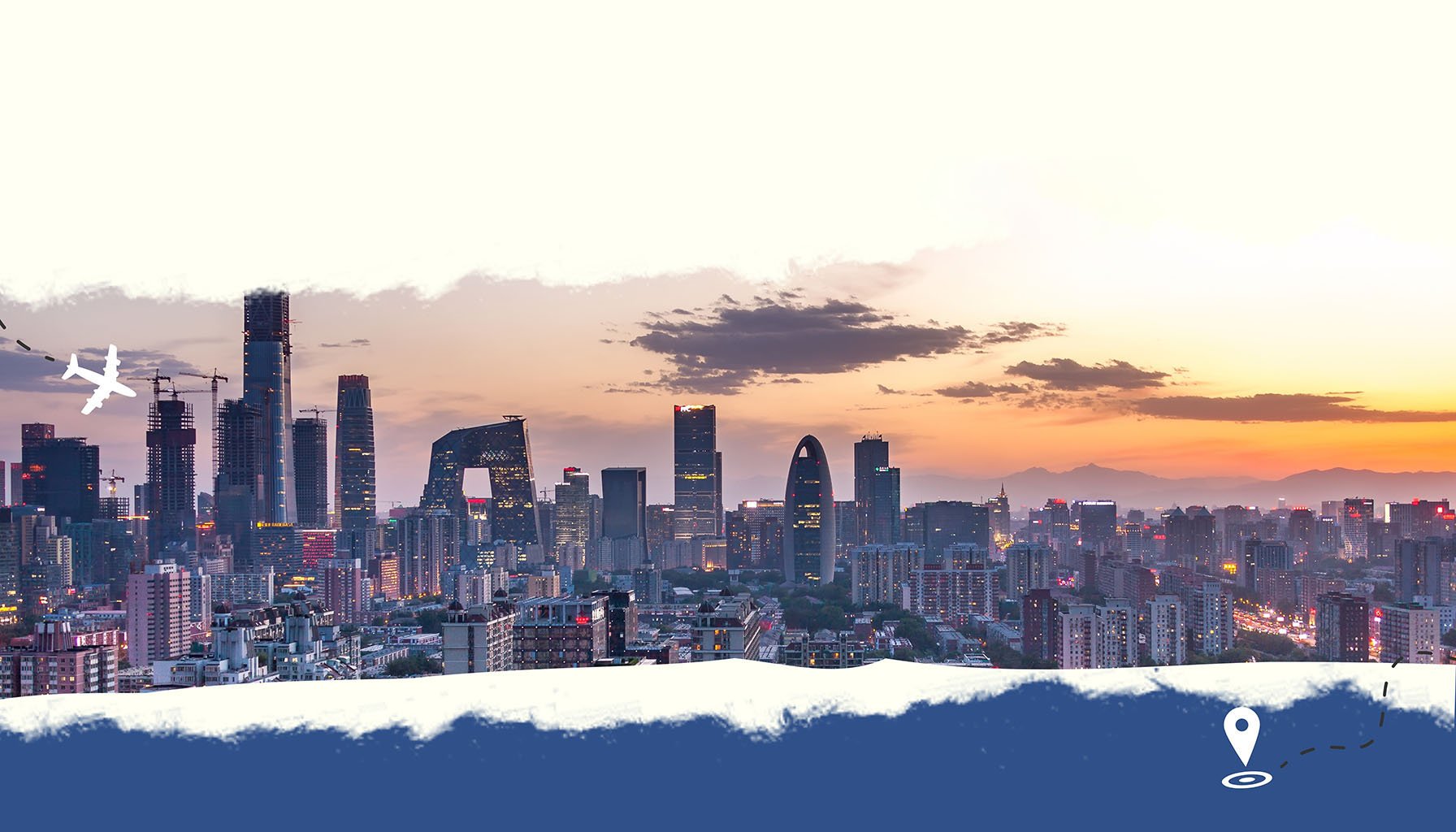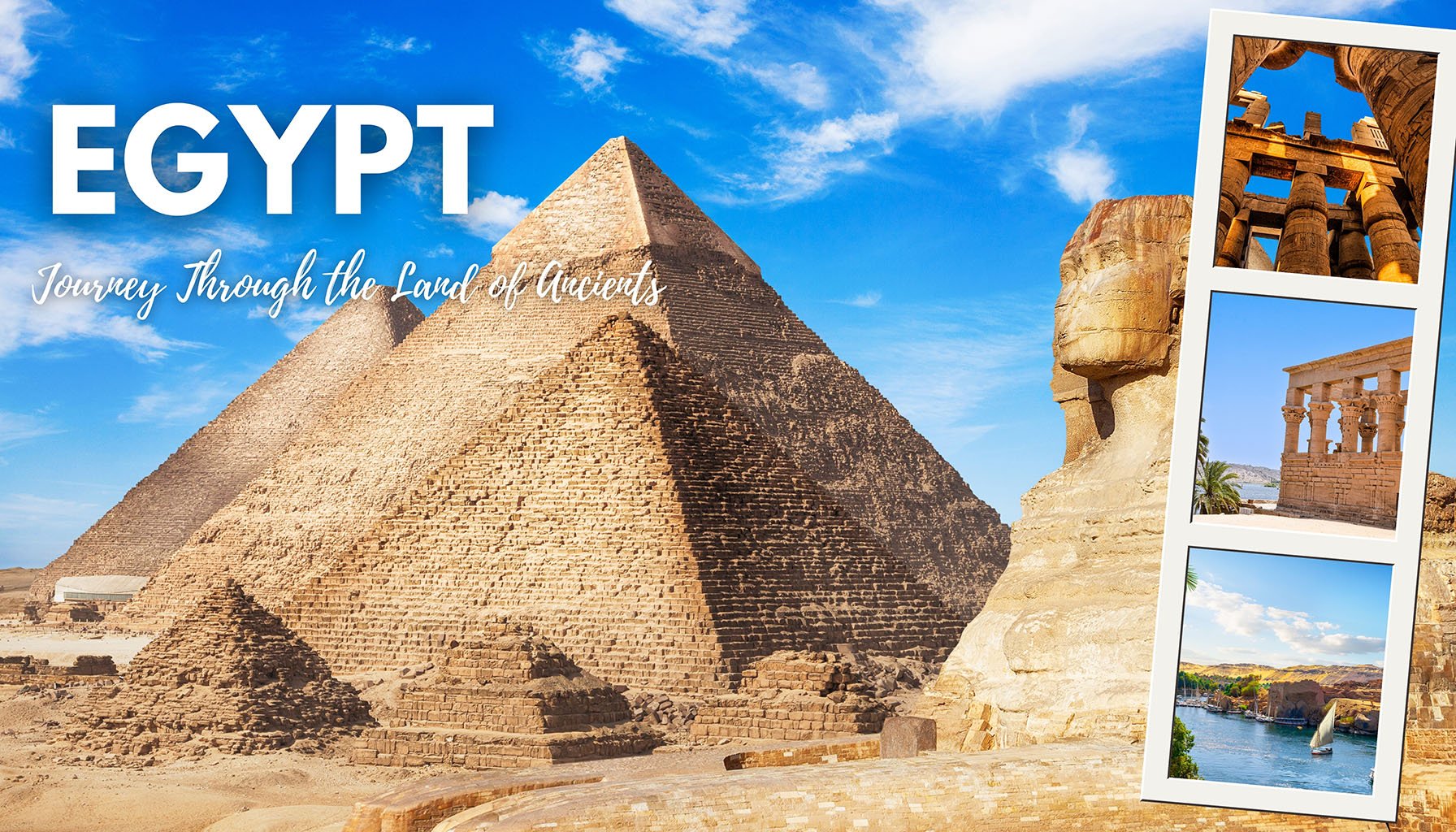Japan is a destination that effortlessly blends ancient traditions with cutting-edge modernity, offering travelers a unique and unforgettable experience. From the neon-lit streets of Tokyo to the serene temples of Kyoto, the country is a treasure trove of cultural, historical, and natural wonders. Whether you’re a first-time visitor or a seasoned explorer, these top 10 must-visit places in Japan will leave you enchanted by the nation’s diverse landscapes and rich heritage. As you embark on this journey, staying connected is key, and the VeloeSIM app ensures you have a reliable and affordable internet connection while traveling in Japan, available on both Android and iOS devices.
1. Tokyo: The Heartbeat of Modern Japan
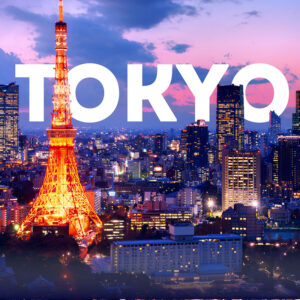 Tokyo, Japan’s bustling capital, is a vibrant metropolis where tradition meets innovation in the most captivating way. This sprawling city, home to over 14 million people, offers an eclectic mix of experiences that cater to every type of traveler. Begin your journey at Shibuya Crossing, often dubbed the world’s busiest pedestrian intersection, where thousands of people cross in a mesmerizing dance of organized chaos—especially enchanting at night when the neon lights illuminate the scene. For a taste of history, visit Senso-ji Temple in Asakusa, Tokyo’s oldest Buddhist temple, founded in 645 AD, where you can explore its iconic Kaminarimon (Thunder Gate) and shop for traditional souvenirs along Nakamise-dori street. Harajuku is the epicenter of Japan’s youth culture, showcasing avant-garde fashion, quirky street styles, and trendy cafes—don’t miss Takeshita Street for its vibrant energy. For panoramic views, ascend Tokyo Skytree, one of the tallest towers in the world at 634 meters, where on clear days you can see Mount Fuji in the distance. Food lovers will find paradise at Tsukiji Outer Market, renowned for its fresh sushi, sashimi, and seafood stalls, offering a chance to taste Japan’s culinary excellence. For an immersive cultural experience, visit teamLab Borderless in Odaiba, a digital art museum that transports you into a surreal world of interactive light displays, waterfalls, and mirrored rooms—an unforgettable sensory journey that redefines art in the digital age.
Tokyo, Japan’s bustling capital, is a vibrant metropolis where tradition meets innovation in the most captivating way. This sprawling city, home to over 14 million people, offers an eclectic mix of experiences that cater to every type of traveler. Begin your journey at Shibuya Crossing, often dubbed the world’s busiest pedestrian intersection, where thousands of people cross in a mesmerizing dance of organized chaos—especially enchanting at night when the neon lights illuminate the scene. For a taste of history, visit Senso-ji Temple in Asakusa, Tokyo’s oldest Buddhist temple, founded in 645 AD, where you can explore its iconic Kaminarimon (Thunder Gate) and shop for traditional souvenirs along Nakamise-dori street. Harajuku is the epicenter of Japan’s youth culture, showcasing avant-garde fashion, quirky street styles, and trendy cafes—don’t miss Takeshita Street for its vibrant energy. For panoramic views, ascend Tokyo Skytree, one of the tallest towers in the world at 634 meters, where on clear days you can see Mount Fuji in the distance. Food lovers will find paradise at Tsukiji Outer Market, renowned for its fresh sushi, sashimi, and seafood stalls, offering a chance to taste Japan’s culinary excellence. For an immersive cultural experience, visit teamLab Borderless in Odaiba, a digital art museum that transports you into a surreal world of interactive light displays, waterfalls, and mirrored rooms—an unforgettable sensory journey that redefines art in the digital age.
2. Kyoto: The Cultural Soul of Japan
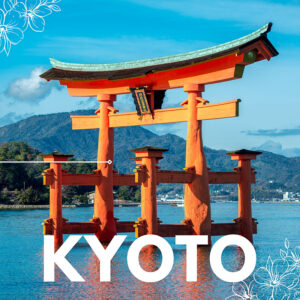 Kyoto, Japan’s former imperial capital for over a thousand years, is the epicenter of traditional Japanese culture and a city that feels like stepping back in time. With over 2,000 temples and shrines, Kyoto offers endless opportunities to explore Japan’s spiritual heritage. Start with Kinkaku-ji (Golden Pavilion), a Zen temple adorned with shimmering gold leaf on its top two floors, reflecting beautifully in its surrounding pond amidst meticulously landscaped gardens—a sight that embodies the elegance of Japanese architecture. Fushimi Inari Shrine, dedicated to the Shinto god of rice, is famous for its thousands of vermilion torii gates forming a mesmerizing trail up Mount Inari; the hike to the summit takes about 2-3 hours and offers serene views of the city. The Arashiyama Bamboo Grove is a must-see, with its towering bamboo stalks creating a tranquil canopy that feels almost otherworldly—visit early in the morning to avoid crowds and capture the grove’s ethereal beauty. Explore the Gion District, Kyoto’s famous geisha quarter, where traditional wooden machiya houses line the streets, and you might catch a glimpse of a geisha or maiko (apprentice geisha) on her way to an appointment. Nijo Castle, a UNESCO World Heritage site, offers a glimpse into Japan’s feudal past with its “nightingale floors” that chirp when walked on, designed to alert guards of intruders. For an authentic cultural immersion, stay in a ryokan, a traditional Japanese inn, where you can sleep on futons, enjoy kaiseki (multi-course) meals, and relax in an onsen (hot spring bath), experiencing the hospitality that has defined Japan for centuries.
Kyoto, Japan’s former imperial capital for over a thousand years, is the epicenter of traditional Japanese culture and a city that feels like stepping back in time. With over 2,000 temples and shrines, Kyoto offers endless opportunities to explore Japan’s spiritual heritage. Start with Kinkaku-ji (Golden Pavilion), a Zen temple adorned with shimmering gold leaf on its top two floors, reflecting beautifully in its surrounding pond amidst meticulously landscaped gardens—a sight that embodies the elegance of Japanese architecture. Fushimi Inari Shrine, dedicated to the Shinto god of rice, is famous for its thousands of vermilion torii gates forming a mesmerizing trail up Mount Inari; the hike to the summit takes about 2-3 hours and offers serene views of the city. The Arashiyama Bamboo Grove is a must-see, with its towering bamboo stalks creating a tranquil canopy that feels almost otherworldly—visit early in the morning to avoid crowds and capture the grove’s ethereal beauty. Explore the Gion District, Kyoto’s famous geisha quarter, where traditional wooden machiya houses line the streets, and you might catch a glimpse of a geisha or maiko (apprentice geisha) on her way to an appointment. Nijo Castle, a UNESCO World Heritage site, offers a glimpse into Japan’s feudal past with its “nightingale floors” that chirp when walked on, designed to alert guards of intruders. For an authentic cultural immersion, stay in a ryokan, a traditional Japanese inn, where you can sleep on futons, enjoy kaiseki (multi-course) meals, and relax in an onsen (hot spring bath), experiencing the hospitality that has defined Japan for centuries.
3. Mount Fuji: Japan’s Iconic Peak
 Mount Fuji, Japan’s highest mountain at 3,776 meters, is more than just a natural wonder—it’s a cultural icon, a UNESCO World Heritage site, and a symbol of Japan’s enduring spirit. Revered in Shinto and Buddhist traditions, this perfectly symmetrical volcano has inspired artists, poets, and pilgrims for centuries. A pilgrimage to its summit, accessible from July to September, is a bucket-list experience for many; the climb takes 5-7 hours, with climbers often starting at night to reach the peak for a breathtaking sunrise—a moment of profound beauty as the first light bathes the landscape in golden hues. If climbing isn’t your preference, the Fuji Five Lakes region, particularly Lake Kawaguchi, provides equally spectacular vistas, especially during the Fuji Shibazakura Festival in spring, when vibrant pink moss phlox carpets the ground, creating a stunning contrast with Fuji’s snow-capped peak. Explore the mystical Aokigahara Forest at the mountain’s base, often called the “Sea of Trees,” known for its dense foliage and eerie silence, though it’s also associated with local folklore and modern myths. Unwind in a hot spring at Hakone, where many ryokans offer outdoor baths with unobstructed views of Fuji, blending relaxation with natural beauty. For the clearest views, visit in the early morning during late autumn or winter, when the air is crisp, and the mountain’s silhouette stands out against the sky—avoid summer months when clouds often obscure the peak.
Mount Fuji, Japan’s highest mountain at 3,776 meters, is more than just a natural wonder—it’s a cultural icon, a UNESCO World Heritage site, and a symbol of Japan’s enduring spirit. Revered in Shinto and Buddhist traditions, this perfectly symmetrical volcano has inspired artists, poets, and pilgrims for centuries. A pilgrimage to its summit, accessible from July to September, is a bucket-list experience for many; the climb takes 5-7 hours, with climbers often starting at night to reach the peak for a breathtaking sunrise—a moment of profound beauty as the first light bathes the landscape in golden hues. If climbing isn’t your preference, the Fuji Five Lakes region, particularly Lake Kawaguchi, provides equally spectacular vistas, especially during the Fuji Shibazakura Festival in spring, when vibrant pink moss phlox carpets the ground, creating a stunning contrast with Fuji’s snow-capped peak. Explore the mystical Aokigahara Forest at the mountain’s base, often called the “Sea of Trees,” known for its dense foliage and eerie silence, though it’s also associated with local folklore and modern myths. Unwind in a hot spring at Hakone, where many ryokans offer outdoor baths with unobstructed views of Fuji, blending relaxation with natural beauty. For the clearest views, visit in the early morning during late autumn or winter, when the air is crisp, and the mountain’s silhouette stands out against the sky—avoid summer months when clouds often obscure the peak.
4. Hiroshima: A Symbol of Peace and Resilience
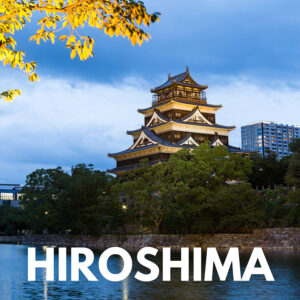 Hiroshima carries a profound historical significance as the first city to suffer an atomic bombing in 1945, yet today it stands as a beacon of peace, resilience, and hope. The Peace Memorial Park and Museum are essential stops, offering a sobering reflection on the events of August 6, 1945, through artifacts, survivor testimonies, and exhibits that advocate for a nuclear-free world—prepare for an emotional experience as you walk through the park’s monuments, including the Children’s Peace Monument, inspired by a young girl’s wish for peace. The Atomic Bomb Dome, a preserved ruin of the former Prefectural Industrial Promotion Hall, stands as a haunting reminder of the past, its skeletal structure a UNESCO World Heritage site symbolizing the city’s commitment to peace. Nearby, the island of Miyajima is home to the Itsukushima Shrine, another UNESCO site famous for its “floating” torii gate, which appears to rise from the Seto Inland Sea at high tide—a breathtaking sight best captured at sunset. Hiroshima Castle, a faithful reconstruction of the original 16th-century fortress destroyed in the bombing, provides historical context with its museum showcasing samurai artifacts and panoramic city views from its top floor. While in Hiroshima, savor the local specialty, Hiroshima-style okonomiyaki, a layered savory pancake packed with noodles, cabbage, and your choice of toppings like shrimp or pork, often prepared right in front of you on a teppan grill—a culinary experience that reflects the city’s vibrant spirit.
Hiroshima carries a profound historical significance as the first city to suffer an atomic bombing in 1945, yet today it stands as a beacon of peace, resilience, and hope. The Peace Memorial Park and Museum are essential stops, offering a sobering reflection on the events of August 6, 1945, through artifacts, survivor testimonies, and exhibits that advocate for a nuclear-free world—prepare for an emotional experience as you walk through the park’s monuments, including the Children’s Peace Monument, inspired by a young girl’s wish for peace. The Atomic Bomb Dome, a preserved ruin of the former Prefectural Industrial Promotion Hall, stands as a haunting reminder of the past, its skeletal structure a UNESCO World Heritage site symbolizing the city’s commitment to peace. Nearby, the island of Miyajima is home to the Itsukushima Shrine, another UNESCO site famous for its “floating” torii gate, which appears to rise from the Seto Inland Sea at high tide—a breathtaking sight best captured at sunset. Hiroshima Castle, a faithful reconstruction of the original 16th-century fortress destroyed in the bombing, provides historical context with its museum showcasing samurai artifacts and panoramic city views from its top floor. While in Hiroshima, savor the local specialty, Hiroshima-style okonomiyaki, a layered savory pancake packed with noodles, cabbage, and your choice of toppings like shrimp or pork, often prepared right in front of you on a teppan grill—a culinary experience that reflects the city’s vibrant spirit.
5. Okinawa: A Tropical Paradise with a Unique Culture
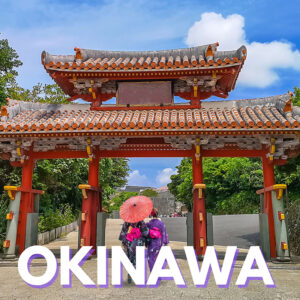
The Okinawa archipelago, located in Japan’s far south, offers a distinct contrast to the mainland with its subtropical climate, turquoise beaches, and vibrant Ryukyuan culture, shaped by centuries of trade with Southeast Asia and China. Shuri Castle in Naha, the restored palace of the Ryukyu Kingdom and a UNESCO World Heritage site, showcases Okinawa’s royal heritage with its striking red architecture and intricate Shinto shrines—though partially damaged by a 2019 fire, ongoing restoration efforts highlight its cultural significance. At Churaumi Aquarium, one of the largest in the world, you can marvel at majestic whale sharks, manta rays, and vibrant coral reefs through a massive acrylic panel, offering a glimpse into the rich marine life of the Okinawan seas. Ishigaki Island beckons with its pristine beaches like Kabira Bay, where you can snorkel among coral reefs or take a glass-bottom boat tour to see the underwater world without getting wet. Yanbaru National Park, a UNESCO biosphere reserve on Okinawa’s main island, offers a chance to spot rare wildlife like the endangered Okinawa rail, a flightless bird unique to the region, amid lush subtropical forests. For a cultural immersion, visit Okinawa World, a theme park that celebrates local traditions through eisa dance performances, indigo dyeing workshops, and demonstrations of sanshin (a three-stringed instrument). Don’t leave without trying awamori, Okinawa’s traditional distilled spirit made from long-grain rice, known for its potent kick and often aged for years to enhance its flavor—a perfect souvenir to bring home.
6. Osaka: The Foodie Capital with a Lively Spirit
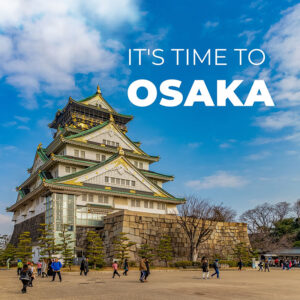 Osaka, Japan’s third-largest city, is renowned for its warm locals, thriving food scene, and energetic atmosphere, earning it the nickname “Japan’s Kitchen.” Osaka Castle, a historical gem surrounded by stunning gardens and moats, is a symbol of the city’s samurai past—visit during cherry blossom season in spring for a breathtaking display, or in autumn when the foliage transforms into shades of red and gold. Dotonbori, the city’s entertainment district, dazzles with its neon lights, canal views, and endless eateries; take a canal cruise to soak in the vibrant atmosphere, or snap a photo with the iconic Glico Man sign. Kuromon Ichiba Market, with over 170 years of history, is a food lover’s paradise, offering everything from fresh seafood like sea urchin and scallops to street snacks like grilled crab legs—don’t be shy about sampling as you stroll through its bustling alleys. For thrill-seekers, Universal Studios Japan delivers a fun-filled experience with a uniquely Japanese flair, featuring attractions like the Wizarding World of Harry Potter, Super Nintendo World, and seasonal events like Halloween Horror Nights. Be sure to indulge in Osaka’s culinary specialties, such as takoyaki (octopus balls), kushikatsu (deep-fried skewers), and okonomiyaki (savory pancakes), best enjoyed hot from a street vendor while soaking in the city’s lively vibe—Osaka’s food culture is all about hearty, comforting flavors that reflect the locals’ love for good eats.
Osaka, Japan’s third-largest city, is renowned for its warm locals, thriving food scene, and energetic atmosphere, earning it the nickname “Japan’s Kitchen.” Osaka Castle, a historical gem surrounded by stunning gardens and moats, is a symbol of the city’s samurai past—visit during cherry blossom season in spring for a breathtaking display, or in autumn when the foliage transforms into shades of red and gold. Dotonbori, the city’s entertainment district, dazzles with its neon lights, canal views, and endless eateries; take a canal cruise to soak in the vibrant atmosphere, or snap a photo with the iconic Glico Man sign. Kuromon Ichiba Market, with over 170 years of history, is a food lover’s paradise, offering everything from fresh seafood like sea urchin and scallops to street snacks like grilled crab legs—don’t be shy about sampling as you stroll through its bustling alleys. For thrill-seekers, Universal Studios Japan delivers a fun-filled experience with a uniquely Japanese flair, featuring attractions like the Wizarding World of Harry Potter, Super Nintendo World, and seasonal events like Halloween Horror Nights. Be sure to indulge in Osaka’s culinary specialties, such as takoyaki (octopus balls), kushikatsu (deep-fried skewers), and okonomiyaki (savory pancakes), best enjoyed hot from a street vendor while soaking in the city’s lively vibe—Osaka’s food culture is all about hearty, comforting flavors that reflect the locals’ love for good eats.
7. Nara: A Window into Japan’s Ancient Past
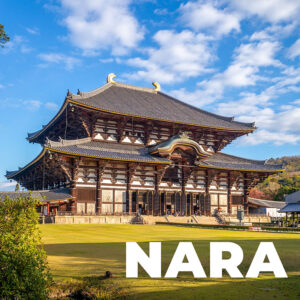 Nara, Japan’s first permanent capital in the 8th century, is a city of historical treasures and natural charm, often overshadowed by its more famous neighbor, Kyoto, but equally deserving of a visit. Todaiji Temple, a UNESCO World Heritage site, houses the Great Buddha (Daibutsu), the world’s largest bronze Buddha statue, standing at 15 meters tall and weighing over 500 tons—step inside the Great Buddha Hall to marvel at its intricate craftsmanship and serene atmosphere, and don’t miss the chance to crawl through the “Nostril of Enlightenment,” a hole in a pillar said to grant wisdom to those who pass through. Nara Park, surrounding the temple, is home to over 1,200 free-roaming deer, considered sacred messengers of the gods in Shinto belief—feed them with special deer crackers (shika senbei) sold by vendors, and watch as they bow politely for treats, a charming interaction that delights visitors of all ages. Kasuga Taisha Shrine, founded in 768 AD, is famous for its hundreds of bronze and stone lanterns, which are lit during the biannual Lantern Festival in February and August, creating a magical glow against the forested backdrop. Isuien Garden, a meticulously designed Japanese landscape garden, provides a peaceful escape with its ponds, teahouses, and seasonal beauty—visit in spring for cherry blossoms or autumn for vibrant maple leaves. Nara’s blend of history, spirituality, and nature makes it an essential stop for anyone seeking to connect with Japan’s ancient roots.
Nara, Japan’s first permanent capital in the 8th century, is a city of historical treasures and natural charm, often overshadowed by its more famous neighbor, Kyoto, but equally deserving of a visit. Todaiji Temple, a UNESCO World Heritage site, houses the Great Buddha (Daibutsu), the world’s largest bronze Buddha statue, standing at 15 meters tall and weighing over 500 tons—step inside the Great Buddha Hall to marvel at its intricate craftsmanship and serene atmosphere, and don’t miss the chance to crawl through the “Nostril of Enlightenment,” a hole in a pillar said to grant wisdom to those who pass through. Nara Park, surrounding the temple, is home to over 1,200 free-roaming deer, considered sacred messengers of the gods in Shinto belief—feed them with special deer crackers (shika senbei) sold by vendors, and watch as they bow politely for treats, a charming interaction that delights visitors of all ages. Kasuga Taisha Shrine, founded in 768 AD, is famous for its hundreds of bronze and stone lanterns, which are lit during the biannual Lantern Festival in February and August, creating a magical glow against the forested backdrop. Isuien Garden, a meticulously designed Japanese landscape garden, provides a peaceful escape with its ponds, teahouses, and seasonal beauty—visit in spring for cherry blossoms or autumn for vibrant maple leaves. Nara’s blend of history, spirituality, and nature makes it an essential stop for anyone seeking to connect with Japan’s ancient roots.
8. Sapporo: Hokkaido’s Winter Wonderland
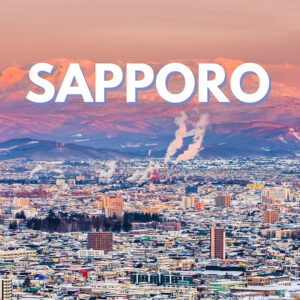 Sapporo, the capital of Hokkaido, Japan’s northernmost island, is a haven for nature lovers, food enthusiasts, and winter adventurers, offering a refreshing contrast to the urban intensity of cities like Tokyo and Osaka. Odori Park, the city’s green heart stretching 1.5 kilometers through downtown Sapporo, hosts numerous festivals, including the world-famous Sapporo Snow Festival in February, where artists from around the globe create massive snow and ice sculptures—some as tall as 15 meters—drawing millions of visitors to marvel at their intricate designs under twinkling lights. The Sapporo Beer Museum, housed in a historic red-brick building, offers a taste of Japan’s oldest beer brand, established in 1877, with guided tours that delve into the history of brewing in Hokkaido, followed by a tasting session of Sapporo’s signature brews like Sapporo Classic, only available in the region. For panoramic views, take the ropeway to Mount Moiwa, where a 10-minute ride brings you to an observation deck offering 360-degree vistas of Sapporo’s skyline, the Ishikari Plain, and even the Sea of Japan on clear days—sunset visits are particularly stunning. Moerenuma Park, designed by renowned sculptor Isamu Noguchi, combines art and nature with its geometric landscapes, including a glass pyramid, a man-made mountain, and interactive installations like a giant fountain that performs water shows in summer, making it a perfect spot for a leisurely day out with family or friends.
Sapporo, the capital of Hokkaido, Japan’s northernmost island, is a haven for nature lovers, food enthusiasts, and winter adventurers, offering a refreshing contrast to the urban intensity of cities like Tokyo and Osaka. Odori Park, the city’s green heart stretching 1.5 kilometers through downtown Sapporo, hosts numerous festivals, including the world-famous Sapporo Snow Festival in February, where artists from around the globe create massive snow and ice sculptures—some as tall as 15 meters—drawing millions of visitors to marvel at their intricate designs under twinkling lights. The Sapporo Beer Museum, housed in a historic red-brick building, offers a taste of Japan’s oldest beer brand, established in 1877, with guided tours that delve into the history of brewing in Hokkaido, followed by a tasting session of Sapporo’s signature brews like Sapporo Classic, only available in the region. For panoramic views, take the ropeway to Mount Moiwa, where a 10-minute ride brings you to an observation deck offering 360-degree vistas of Sapporo’s skyline, the Ishikari Plain, and even the Sea of Japan on clear days—sunset visits are particularly stunning. Moerenuma Park, designed by renowned sculptor Isamu Noguchi, combines art and nature with its geometric landscapes, including a glass pyramid, a man-made mountain, and interactive installations like a giant fountain that performs water shows in summer, making it a perfect spot for a leisurely day out with family or friends.
9. Kanazawa: A Hidden Gem of Edo-Era Charm
 Often dubbed “Little Kyoto,” Kanazawa is a city of preserved history and artistic traditions, offering a quieter alternative to its more famous counterpart while retaining the charm of Japan’s Edo period (1603-1868). Kenroku-en Garden, one of Japan’s three most beautiful landscape gardens, captivates with its seasonal beauty—cherry blossoms in spring, vibrant foliage in autumn, and snow-draped pines in winter, supported by yukitsuri ropes to protect branches from heavy snowfall, a sight unique to the region. The Nagamachi Samurai District offers a glimpse into the Edo period with its well-preserved samurai residences, cobblestone streets, and earthen walls—visit the Nomura Clan Samurai House to see artifacts like armor and tea ceremony utensils, and learn about the lives of Kanazawa’s warrior class. Art enthusiasts should explore the 21st Century Museum of Contemporary Art, a circular building with cutting-edge exhibits, including Leandro Erlich’s “Swimming Pool,” an interactive installation where visitors appear to be underwater. At Omicho Market, dating back to the Edo period, you can sample fresh seafood like kaisen-don (seafood rice bowls) with crab and sea urchin, as well as local delicacies such as jibuni (duck stew), reflecting Kanazawa’s rich culinary heritage. For a hands-on cultural experience, try Kanazawa’s traditional gold leaf application, a craft that has thrived here for over 400 years—create your own gold leaf souvenir, or sample gold leaf ice cream, a decadent treat sprinkled with edible gold flakes.
Often dubbed “Little Kyoto,” Kanazawa is a city of preserved history and artistic traditions, offering a quieter alternative to its more famous counterpart while retaining the charm of Japan’s Edo period (1603-1868). Kenroku-en Garden, one of Japan’s three most beautiful landscape gardens, captivates with its seasonal beauty—cherry blossoms in spring, vibrant foliage in autumn, and snow-draped pines in winter, supported by yukitsuri ropes to protect branches from heavy snowfall, a sight unique to the region. The Nagamachi Samurai District offers a glimpse into the Edo period with its well-preserved samurai residences, cobblestone streets, and earthen walls—visit the Nomura Clan Samurai House to see artifacts like armor and tea ceremony utensils, and learn about the lives of Kanazawa’s warrior class. Art enthusiasts should explore the 21st Century Museum of Contemporary Art, a circular building with cutting-edge exhibits, including Leandro Erlich’s “Swimming Pool,” an interactive installation where visitors appear to be underwater. At Omicho Market, dating back to the Edo period, you can sample fresh seafood like kaisen-don (seafood rice bowls) with crab and sea urchin, as well as local delicacies such as jibuni (duck stew), reflecting Kanazawa’s rich culinary heritage. For a hands-on cultural experience, try Kanazawa’s traditional gold leaf application, a craft that has thrived here for over 400 years—create your own gold leaf souvenir, or sample gold leaf ice cream, a decadent treat sprinkled with edible gold flakes.
10. Nikko: A Sanctuary of Shrines and Scenic Beauty
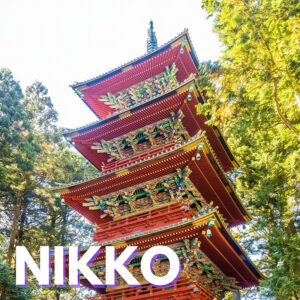 Nikko, a UNESCO World Heritage site nestled in the mountains of Tochigi Prefecture, is a spiritual retreat that combines architectural splendor with natural beauty, making it a perfect escape from Japan’s urban centers. Toshogu Shrine, the opulent mausoleum of Tokugawa Ieyasu, founder of the Tokugawa shogunate, is a masterpiece of intricate woodwork, vibrant colors, and symbolic carvings—don’t miss the famous “see no evil, hear no evil, speak no evil” monkey carving, a Shinto motif representing wisdom, and the Yomeimon Gate, adorned with over 500 sculptures, often called the “Gate of Eternal Dusk” because you could gaze at it all day. Nearby, Kegon Falls, one of Japan’s three most beautiful waterfalls, cascades 97 meters into the serene waters of Lake Chuzenji, offering a dramatic spectacle that’s especially striking when framed by autumn foliage or winter ice. Lake Chuzenji itself, formed by a volcanic eruption 20,000 years ago, is a serene spot for boating or simply soaking in the views, with Mount Nantai—a sacred peak often climbed by pilgrims—rising in the background. Nikko National Park, encompassing the area, offers an array of hiking trails through ancient cedar forests, where you can encounter hidden waterfalls, moss-covered stones, and natural hot springs (onsen) perfect for a relaxing soak after a day of exploration. For a unique experience, visit the Kanmangafuchi Abyss, a gorge formed by lava flows, lined with over 70 Jizo statues—guardian deities of travelers and children—some adorned with red bibs, creating a mystical atmosphere along the Daiya River. The best time to visit Nikko is autumn, when the foliage transforms into a fiery palette of reds, oranges, and yellows, or winter, when snow blankets the shrines and mountains, creating a magical, ethereal scene that feels straight out of a fairytale.
Nikko, a UNESCO World Heritage site nestled in the mountains of Tochigi Prefecture, is a spiritual retreat that combines architectural splendor with natural beauty, making it a perfect escape from Japan’s urban centers. Toshogu Shrine, the opulent mausoleum of Tokugawa Ieyasu, founder of the Tokugawa shogunate, is a masterpiece of intricate woodwork, vibrant colors, and symbolic carvings—don’t miss the famous “see no evil, hear no evil, speak no evil” monkey carving, a Shinto motif representing wisdom, and the Yomeimon Gate, adorned with over 500 sculptures, often called the “Gate of Eternal Dusk” because you could gaze at it all day. Nearby, Kegon Falls, one of Japan’s three most beautiful waterfalls, cascades 97 meters into the serene waters of Lake Chuzenji, offering a dramatic spectacle that’s especially striking when framed by autumn foliage or winter ice. Lake Chuzenji itself, formed by a volcanic eruption 20,000 years ago, is a serene spot for boating or simply soaking in the views, with Mount Nantai—a sacred peak often climbed by pilgrims—rising in the background. Nikko National Park, encompassing the area, offers an array of hiking trails through ancient cedar forests, where you can encounter hidden waterfalls, moss-covered stones, and natural hot springs (onsen) perfect for a relaxing soak after a day of exploration. For a unique experience, visit the Kanmangafuchi Abyss, a gorge formed by lava flows, lined with over 70 Jizo statues—guardian deities of travelers and children—some adorned with red bibs, creating a mystical atmosphere along the Daiya River. The best time to visit Nikko is autumn, when the foliage transforms into a fiery palette of reds, oranges, and yellows, or winter, when snow blankets the shrines and mountains, creating a magical, ethereal scene that feels straight out of a fairytale.
Plan Your Journey to Japan’s Must-Visit Destinations
These top 10 must-visit places in Japan offer a diverse glimpse into the country’s rich tapestry of culture, history, and natural beauty. From the futuristic streets of Tokyo to the tranquil shrines of Nikko, each destination provides a unique perspective on what makes Japan so captivating. To make the most of your travels, consider purchasing a Japan Rail Pass, which offers convenient and cost-effective transportation between these cities, allowing you to explore at your own pace. Whether you’re immersing yourself in Kyoto’s ancient traditions, savoring Osaka’s street food, or marveling at Mount Fuji’s majestic presence, Japan promises memories that will last a lifetime.
